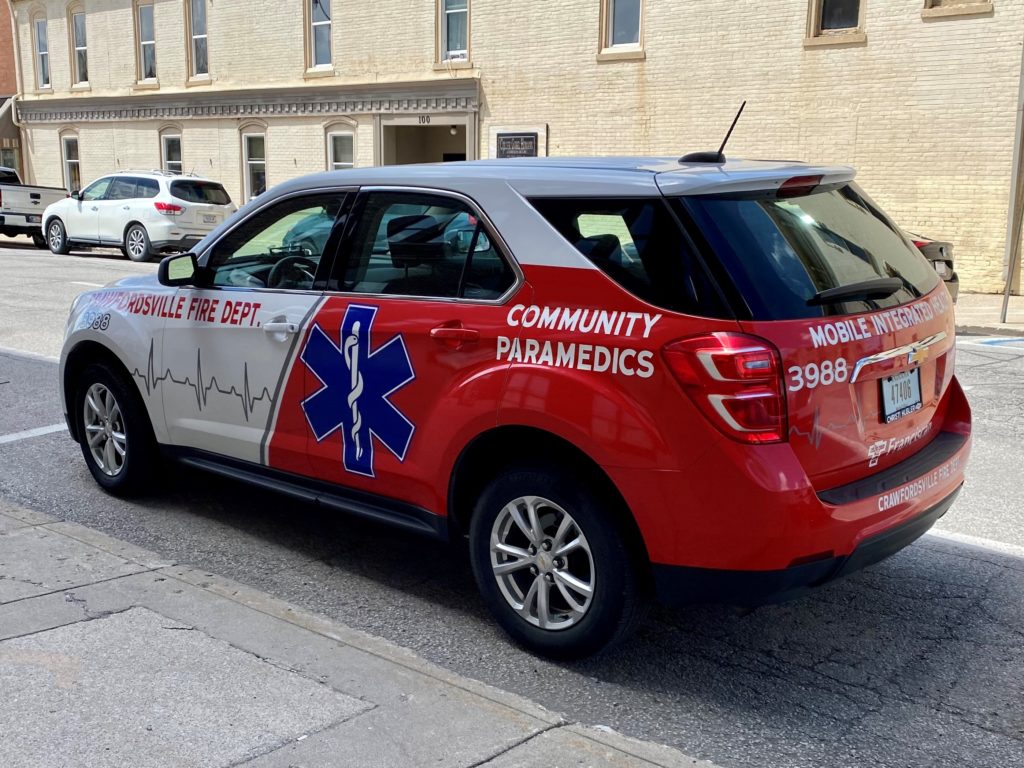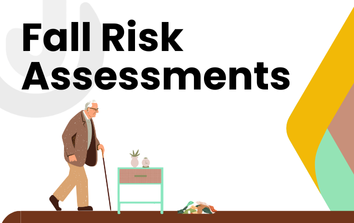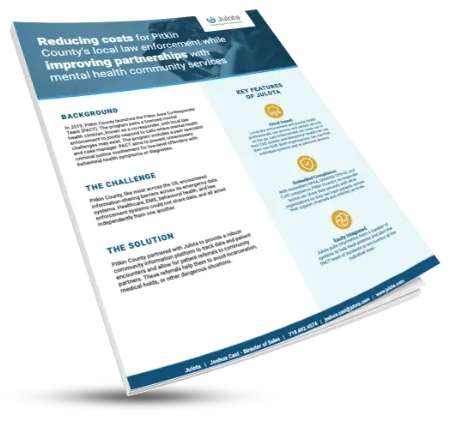
Trying to start a community paramedic program alone is like trying to build a house without a blueprint. However, it’s much easier to have a guide. This article will highlight the Crawfordville Fire Department in Indiana, one of the leading community paramedicine programs in the nation, as an example of community paramedicine.
Let this program serve as a guide as you seek to learn more about community paramedicine.
We will discuss the problems this program faced in their community, how they responded, and how their community paramedic program is making positive change.
Crawfordsville Fire Department: Example of Mobile Integrated Healthcare-Community Paramedicine (MIH-CP)
To get the complete picture of this program, we’ll first learn who they are and the unique problems they face. Then, we’ll look at how this fire department’s actions are making a fundamental change in their community.
To get the complete picture, here’s a list to keep us on track:
- Getting to know Crawfordsville Indiana
- Getting to know the Fire Department
- Unique healthcare needs of Crawfordsville
- Programs they’ve instituted
- Partners they’ve created
Note: If you’re entirely new to this idea, see our article explaining mobile integrated healthcare-community paramedicine. Also, see our article on the seven steps to starting your MIH-CP program.
Getting to Know Crawfordsville Indiana
Crawfordsville is a city of about 15,000 people. The town is about 40 miles northwest of Indianapolis. Crawfordsville is the county seat of Montgomery County, which has a population of around 40,000.
These rural areas are one of the critical places for the growth of community paramedic programs. In addition, community paramedic programs are often a great option when there are limited primary care options or patients must travel lengths to receive care.
Let’s learn more about the fire department.
Getting to Know Crawfordsville Fire Department
The Crawfordsville Fire department also provides emergency medical services. They have a staff of firefighters, paramedics, and EMTs.
The fire department began its community paramedic program in 2017. They were able to start their funding with a grant from the state of Indiana. They soon developed partnerships with nearby organizations as they continued strengthening their program.
Now, let’s talk about the healthcare needs of this area and how the fire department was able to fill in the gaps.
The Healthcare Needs of Crawfordville and Montgomery County, Indiana
The Crawfordsville fire department has several divisions of their community paramedic program. Their programs focus on maternal and infant health, improving response to substance abuse, managing chronic diseases, and increasing vaccination access. Let’s look at these divisions and talk about their impact.
Here are four divisions of the Crawfordsville MIH-CP program:
- Project swaddle
- Substance abuse response
- Chronic disease management
- Vaccination program
Below, we’ll talk about how these programs work and how they’re making an impact.
Project Swaddle
Project swaddle reached out to at-risk infants and mothers within the community. Sadly, this area of the country has a higher risk of infant mortality, and many mothers don’t have close access to maternal care. So, seeing the need, Crawfordsville made a plan.
Through their project swaddle program, the community paramedics create a mode of contact between expectant or new mothers and healthcare professionals. The community paramedic will perform wellness checks, answer questions, and provide information regarding preventable risks surrounding newborn and maternal health.
Mothers can call their care providers, and the community paramedic can answer their questions or reach out to the local OB nurses and physicians.
In the next section, we discuss how Crawfordsville is tackling drug use and overdoses in their community.
Substance Use Disorder Quick Response Team (QRT)
Their substance use disorder team works to reduce the risks associated with chronic drug abuse. As a result, their team is following a positive new trend in healthcare: instead of reacting to disease and injury, they deliver proactive injury prevention.
This model has become popular with hospitals, EMS, and law enforcement. In addition, the Crawfordsville response team works with social workers who can help guide the patient’s path to recovery.
Some of the programs around the country are responding with PORT programs. These programs also address the aftermath of an overdose, leading to the full gamut of protection for substance use. Programs like Crawfordsville’s QRT lead to a better response, and post overdoes response teams can improve long-term outcomes.
Now, let’s talk about how Crawfordsville addresses chronic diseases, one of the most common reasons for frequent 911 callers.
Chronic Disease Management
Though many diseases can become severe, several health conditions commonly get out of hand. These ailments include heart disease, COPD, and diabetes. The Crawfordsville community paramedic program will proactively reach out to these patients. The at-risk patients are referred to the program by a physician, and the team uses telehealth technology to keep the patients connected to their providers.
They estimate that their program has led to healthcare savings of up to $400,000.
These chronic disease management programs are of threefold benefit. First, the patients are happy to finally get their chronic conditions under control and have professional help just a phone call away – especially if they reside in a rural area where healthcare is hard to come by.
Second, the EMS crews are often happy to have these patients enrolled in preventative programs. However, many patients with chronic diseases are the main reason for super-utilizers. These patients call the ambulance disproportionately more than others, taking ambulances away from critical 911 coverage. Through community paramedic programs, EMS departments can reduce these common calls and get patients the help they need.
Finally, many hospitals are happy to reduce their readmission rate. Programs like Crawfordville mean fewer patients flock to the ER and the ICU. In some cases, reducing readmission rates can mean better reimbursement for the hospital.
Vaccination Programs
One of the main hurdles to vaccination is the barrier between patients and clinics. In addition, some patients, particularly in the rural environment, can’t stay current on needed vaccinations.
Unfortunately, many patients are unaware or unable to stay current on a regular vaccine schedule. In most healthcare systems, the onus is on the patient to seek vaccines with their primary care physician. While some infants may receive vaccines at birth, the rural environments of many patients make it difficult for them to follow up on regular childhood vaccine schedules.
The Crawfordville community paramedic program reduces these barriers, bringing vaccines to patients of all ages. This practice has removed barriers and increased the patients’ access to preventative care.
Let’s talk about a key to MIH-CP: partnerships.
Crawfordville Fire MIH-CP Partnerships
Just like the YMCA (or community center) is the center for local sports and activity, the community paramedicine program works as the center for healthcare. Community paramedicine requires partnerships. Without the continuous fostering of solid connections, a community paramedicine program will stall. On the contrary, a community program that establishes strong partnerships is destined to grow.
One of the most remarkable aspects of the Crawfordsville community paramedic program is its ability to inspire and encourage the community and the entire region. Their program has been featured in EMS World Magazine, NBC Nightly News, and countless other local, state, and national organizations.
It shows that the world notices when a program does something different, something that places the patient and the community first.
Here is a list of several of the many partners Crawfordsville has established:
- Franciscan Health Crawfordsville – Hospital
- Montgomery County Health Department
- Indiana Rural Health Association
- Wabash College
- Indiana Family Social Services
This is just a brief list of the many partners involved in the Crawfordville Fire Department’s MIH-CP Program. However, one thing to notice is the diversity of partnerships. They don’t just reach out to the hospital; they consider any potential partners.
Note: People often wonder how to bridge the gap between starting your community paramedic program and establishing it with consistent funding. As many community paramedic programs around the country have proven, including the Colorado Springs Fire Department, one of the best ways to ensure longevity is to establish strong partners.
Not only do the partners increase the program’s reach, but they also provide the funds and resources to help programs like Crawfordsville continue their excellent work.
Time for our final word.
Final Take on Crawfordsville Community Paramedicine Program
Crawfordville’s Fire department is an excellent example of a community paramedic program. They prove that mobile integrated healthcare can start with simple programs and grow into something that inspires and helps thousands of people. It’s also a good indicator of how people feel about community paramedicine: enthusiastic and excited.
The future is bright in mobile integrated healthcare, and as we saw with Crawfordsville, healthcare must be more united. This includes the hospital, mental health departments, law enforcement, and emergency medical services.
Julota is on a mission to help community paramedic programs increase their connectivity with other healthcare providers. Julota’s software allows community paramedic programs to build a complete health record to coordinate care seamlessly with other community organizations. For community paramedicine to work, there must be a framework for teams to collaborate.
Contact Julota for a simple demonstration of their services. Learn why programs around the country have adopted this intuitive software.




